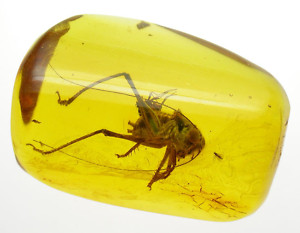 The inclusions in amber are more than just mere ordinary insects and they surely are a lot different to modern insects. Most of these ancient insects are extinct species, extremely rare and one of a kind - this is what makes your amber stone unique.
The inclusions in amber are more than just mere ordinary insects and they surely are a lot different to modern insects. Most of these ancient insects are extinct species, extremely rare and one of a kind - this is what makes your amber stone unique.
Imagine that amber inclusions also appeared in the film Jurassic Park, which is proof of how fascinating are these organic residuals and insects trapped inside. Those pieces that contain insects similar to those in our present day are usually embalmed inclusions in modern fake resin, such as copal or other surrogate materials. They do not even compare with the real inclusions found in real amber. It is extremely exciting to find something trapped inside an amber fossil resin, because these small creatures are proof of a distant past.Inclusions in amber are not related to insects solely. Many other organic residuals that were trapped inside are worthy of this name. We can include in this category plants and rare flowers, larger insects and even small animals such as frogs. As you may know, or may be just finding out now, amber is a fossilized tree resin, with a history of millions of years and many formation processes. During its formation process, while the tree resin was still fresh, many small creatures were trapped in the sticky substance. Fifty million years later, the insects are preserved within the amber stone. The bigger the animals found inside, the rare the amber piece becomes.

So what insect species are found inside amber? You can find various species such as ants, bees, wasps, flies and gnats and sometimes exotic species such as grasshoppers, moths and butterflies, termites, beetles and praying mantises. Inclusions can contain other non-insect animals such as spiders and centipedes, scorpions or even larger ones such as frogs and lizards. However, you will not find inclusions in amber of large-scale animals such as mammals and birds, although feathers and fur may be found in some cases. Plant remains include flowers, mushroom pieces, seeds, pine needles and cones, leaves and stems.
In terms of Paleontology, inclusions in amber are the proof of fauna and flora changes, of animals and plants that co-existed millions of years ago, but are extinct today. They provide increased knowledge in plant and animal species’ evolution. Going back to our modern day, people see amber as a promising business, as collectors world-wide invest money in the purchase of unique inclusions in amber. They believe these pieces will cost a fortune in the future. Also, in Western Europe amber gains more and more interest and admiration. For example, Germany has established an Amber Union of over one hundred scientists, collectors, business reps and people from the art world who spend hours discussing all there is to know about this wonderful semi-precious stone.



